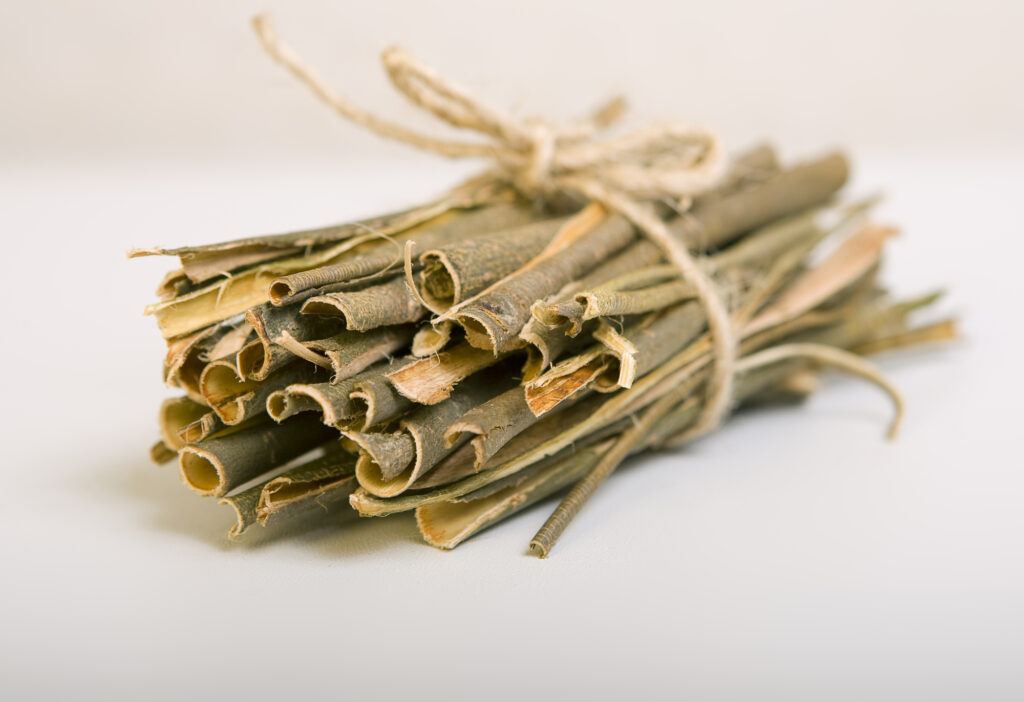Extracts of the bark of trees from the genus Salix, more commonly known as willow, have been used to treat pain and inflammation for thousands of years. From the time of Hippocrates in ancient Greece down through the centuries in China and Europe to today’s health food stores, it has become one of the most time-tested herbal remedies known to man.
The active pain-relieving component of willow bark is salicin, which was used to develop aspirin. Combined with the bark’s other anti-inflammatory flavonoids, it can provide relief for a variety of conditions from headaches to lower back pain.
Despite its centuries of use, modern medicine is just beginning to rediscover willow bark, with mostly in vitro and animal studies demonstrating its anti-inflammatory activity. In human trials, it has shown promise as a treatment for a variety of painful conditions, most notably lower back pain and osteoarthritis. Here are some highlights.
Willow Bark and Back Pain
A randomized, placebo-controlled study published in the American Journal of Medicine evaluated willow bark’s ability to treat lower back pain. A team of German and Israeli researchers recruited 210 patients with chronic lower back pain who reported current pain levels of at least 5 on a 10-point scale. Participants were then randomized to receive either a willow bark extract with 120 mg of salicin, a willow bark extract with 240 mg of salicin, or a placebo each day for four weeks.
After one month, 191 patients remained in the study. Among them, 27 of 65 (39%) in the high-dose treatment group were pain-free by the last week of the study; 15 of 67 (21%) in the low-dose group were pain-free; and only 4 of 59 (6%) in the placebo group were pain-free. Additionally, results in the high-dose group were evident after only one week of treatment.
“Our study confirms previous reports that willow bark extract (standardized to yield 240 mg of salicin) is effective in treating pain,” the researchers wrote in their conclusion. “The low incidence of adverse events observed in this and other studies suggests willow bark extract may be an effective alternative, especially in patients who cannot tolerate NSAIDs.”
Willow Bark and Osteoarthritis
Another randomized, placebo-controlled study, published in Phytotherapy Research, examined willow bark’s efficacy in treating pain associated with osteoarthritis of the knee and hip. Researchers tested an extract of willow bark standardized to contain 240 mg of salicin against a placebo in a group of 78 arthritis sufferers (39 treatment and 39 placebo). Participants’ pain levels were evaluated using the Western Ontario and McMaster Universities Arthritis Index (WOMAC), as well as daily visual analogue scales (VAS) on pain and physical function, and self and researcher assessments.
After two weeks, researchers saw a statistically significant difference between the treatment and placebo groups, with participants who received the willow bark extract seeing a 14% reduction in pain on the WOMAC scale, while the placebo group saw a 2% increase. The VAS and overall assessments confirmed these results. The researchers noted in their conclusion that willow showed an analgesic effect in arthritis sufferers and was well tolerated.
Conclusions
These and other studies provide compelling evidence of willow bark’s ability to effectively treat pain. While more and larger studies are needed, research results so far confirm both willow bark’s safety and efficacy, making it a promising potential alternative for people who have difficulty tolerating other pain medications.
READ THE FULL STUDIES





